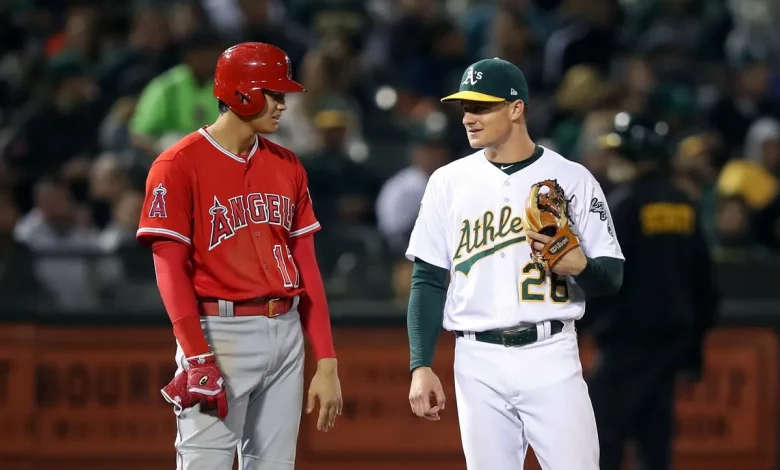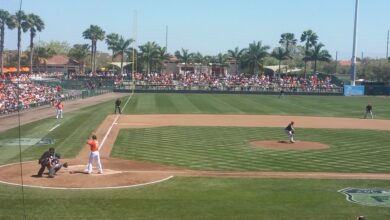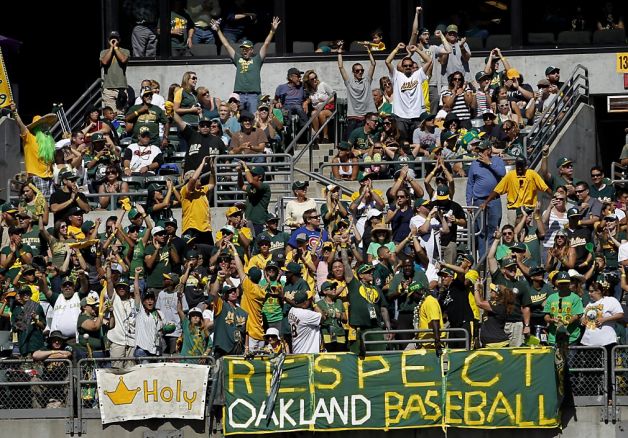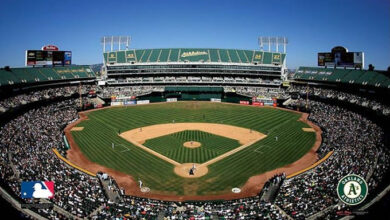
That headline might be a bit harsh, but how else to describe a team on pace to become the worst team in Major League Baseball history? (Besides, it got you to click on this article, didn’t it?) Their just-concluded series win here in Pittsburgh notwithstanding, their record is 14-50, a .21875 winning percentage that translates to a 35-127 record over an entire season.
Bad to the bone
For decades now, the debate over which was the worst team in baseball history has raged on among folks with too much time on their hands. Was it the 1952 Pittsburgh Pirates (with a record of 42-112) or the 1962 Mets (40-120)? The correct answer: The 1899 Cleveland Spiders (20-134). The 2023 Oakland Athletics now are part of this debate, barring a major turnaround.
As of the conclusion of the Pirates series on Wednesday, the Athletics have a team batting line of .225/.305/.359, 62 HR and 222 RBIs. They rank in the bottom five in the American League in all of the important offensive categories. They rank first only in getting hit by pitches with 39. They’re not even good at getting out of the way of the ball.
On the mound, they have four starters with ERAs over 7.00, two of which have ERAs over 8.00. Their team ERA is 6.57, worst in the league. They’re last in the league in many other key pitching statistics as well. The team FIP is a gaudy 5.78, which indicates the pitchers can’t be absolved of much blame. They’ve given up 10 runs or more 18 times.
Small market blues
Of course, they are a young team going through the usual pains a small market team sometimes must go through. Success for small market teams outside of Tampa Bay is cyclical. The periods of rebuilding try the patience of even the best fans.
I was interested in seeing the A’s when they came into Pittsburgh on Monday. Looking down their roster, the only names familiar to me were Tony Kemp and Jace Peterson. In the opening game of the series, the Athletics led the Pirates, 3-1, after five innings behind a pitching performance by JP Sears that, if less than spectacular, was at least creditable. Over four-and-two-thirds innings, he yielded two hits, but five walks and 112 pitches ended his night early.
In the bottom of the sixth, reliever Shintaro Fujinami issued two one-out, bases-loaded walks to tie the score. The next batter, Jack Suwinski, hit a fly ball to shallow right field. The runner on third, catcher Austin Hedges, who will never be renowned for his speed, tagged and scored when right fielder Seth Brown inexplicably threw the ball to third. The teams traded runs in the eighth and the A’s lost, 5-4. It struck me the sixth inning may have been the Athletics’ season in a microcosm. They would win the next two games in Pittsburgh, 11-2 and 9-5, as the Pirates resumed the poor pitching and inability to bring runners home that had been their M.O. in May.
The Connie Mack era
The Athletics reportedly have funding for a new stadium in Las Vegas and anticipate moving there in 2025. How wise it might be to put a major-league team in a gambling mecca is a topic for another day. It will be the franchise’s fourth city. They began as the Philadelphia Athletics in 1901. There, the team had pockets of success under the legendary manager Connie Mack, winning six pennants and three World Series between 1902-1914. They would win two more World Series in 1929 and 1930 and another pennant in 1931 under Mack. Unfortunately, thereafter the team fell on hard times. Infighting by the Mack and Shibe families, who owned the team, resulted in it being sold and moved to Kansas City for the 1955 season.
The Yankees’ farm team era (Kansas City, here I come)
Thus began a disgraceful period in baseball history. The new owner, Arnold Johnson, once owned Yankee Stadium and had business ties to the Yankees’ owners. During his ownership, the Kansas City Athletics basically served as a Yankees farm team. Between 1955-1960, the A’s traded only with the Yankees, who seemed to always get the better of one-sided deals. During that period, the A’s sent Clete Boyer, Joe DeMaestri, Art Ditmar, Roger Maris, Bobby Shantz, Enos Slaughter, Ralph Terry (twice) and Virgil Trucks to the Yankees for little return. The Yankees always seemed to go the Kansas City Athletics to fill a need. Terry was acquired from the A’s, sent back for more seasoning and reacquired. When the Yankees wanted rid of a troublesome Billy Martin, they exiled him to Kansas City.
The Charlie O. Finley era
Charlie O. Finley bought the team in 1960. Finley told the fans the days of feeding the Yankees were over and he was intending to build a champion. What he didn’t say was he would build that champion in Oakland, where the team moved again in 1968. The Oakland A’s won three World Series from 1972-1974. Alas, soon free agency would arrive and Finley refused to pay the higher salaries that his star players would command. In 1976, he sold Rollie Fingers and Joe Rudi to the Boston Red Sox for $1 million each and Vida Blue to the Yankees for $1.5 million. Commissioner Bowie Kuhn, as big a fan of Finley as Finley was of him (meaning, not at all), vetoed the deals as not being in “the best interests of baseball.”
The Finley ownership hit a low on April 17, 1979, when only 250 fans showed up at the Oakland Coliseum to watch the Athletics beat the Seattle Mariners, 6-5. After the game, A’s third baseman Wayne Gross went into the stands and personally thanked each fan for attending. Finally, Finley sold the team in 1981. Under new ownership, the A’s would win three pennants from 1988-1990, including a World Series win in 1989.
The A’s no more?
On Wednesday, it hit me that the Athletics were one of only five teams I’d never seen in person. The next time they would return to Pittsburgh, they would belong to Las Vegas. For all I know, like the Montreal Expos did when they became the Washington Nationals, by then the Athletics’ name might be changed to something more fitting their new adopted city, like the Las Vegas Fools Who Lose Their Money at the Roulette Wheel or the Las Vegas Guys with Diamond Tie Pins and Pinky Rings Who Fix Boxing Matches or maybe even the Nevada Harry Reids. So I blew off work and decided to spend a sunny afternoon at PNC Park for what might be my last chance to see the A’s.
What a waste of a personal day. The A’s jumped on the Pirates early with a 7-run first inning. Their pitchers got enough outs at key moments in the game to result in the 9-5 win. However, what I saw from the A’s in these games impressed me. They’re a gritty team that plays hard. Despite their poor record and their lame duck status in Oakland, they don’t appear to be going through the motions and mailing in performances.
I like what I see in their second-year manager, Mark Kotsay, who could be seen calmly speaking to players after a bad play. They have at least a few potential stars: designated hitter Brent Rooker, presently hitting .263/.363/.505, 12 HR and 36 RBIs, speedy center fielder Esteury Ruiz, who has 29 stolen bases in 35 attempts, and Fujinami, who threw several pitches at 100 or 101 miles per hour in the series. Maybe things will get better under Kotsay’s steady hand and those 1952 Pirates and 1962 Mets won’t get off the hook after all.





